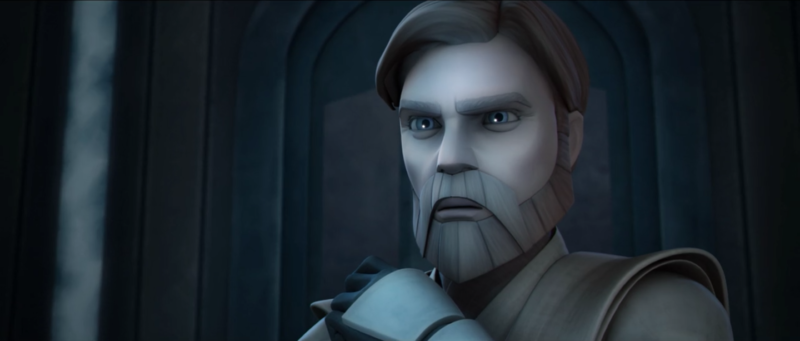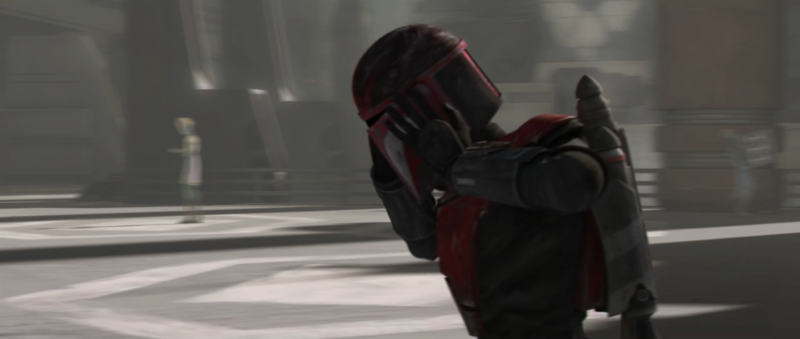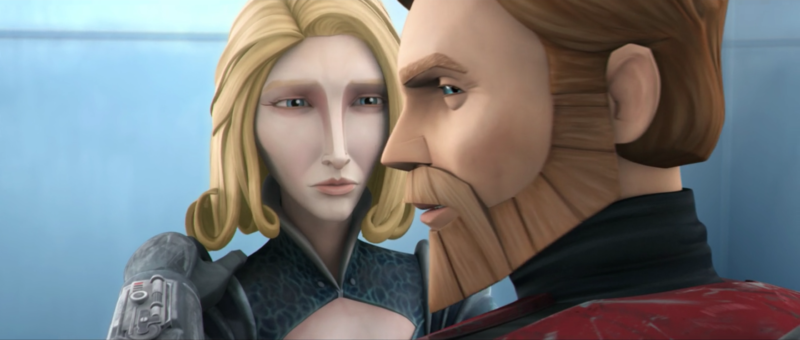THE CINEMATOGRAPHY OF OBI-WAN KENOBI: Tragic Hero Barely Keeping it Together, Life Literally in Shambles – part 1

Welcome to another edition of Obi-Wan Kenobi analysis! I have a sad episode today, brought to you by special request from an anonymous ask.
Get out your tissue boxes, my friends, because we’re taking a deeper look at “The Lawless” from The Clone Wars season 5, episode 16. I’m so so sorry…but I promise we’ll get through this together.
SPECIAL NOTE: There is so much material in “The Lawless” that I could not possibly fit it all in one post. I’ll publish another post tomorrow and possibly the next day, so be sure to check back often. I promise to have more for you to cry over.
HYPER EMOTIONALISM
The first element that stuck out to me was the copious use (but not over use) of the close-up and the extreme close-up. Considering this episode’s subject matter, that’s not terribly surprising.
Close-ups indicate that the character is experiencing strong emotions; this camera angle also subconsciously creates an empathetic response in the audience.
I think we can all agree that Obi-Wan is having “feelings” here:



The extreme close-up (seen just below) is often used in horror films and generally indicates a character is experiencing overwhelming, devastating, or traumatic emotions. This camera angle can create an emotional interaction between the audience and the character.
I don’t know about you but I certainly have reactions to this episode… like… sobbing uncontrollably no matter how many times I’ve watched it. Thanks a lot Filoni! (p.s. I love you don’t stop!)


A great example of this emotionalism is in the scene where Yoda and Ki-Adi-Mundi show Obi-Wan Satine’s hologram. Kenobi is nearly always a balanced, dispassionate Jedi, but the longer he watches Satine’s desperate plea for help, the closer the camera angle gets, squeezing in on him. Obi-Wan even covers his mouth, making a fist and pressing it over his lips in a uncharacteristically visible act of self-control. The more emotionally isolated he becomes, the more isolated he becomes in the frame.



KENOBI GOES ROGUE JEDI
The second element that stood out A LOT was Obi-Wan’s uncharacteristic framing and body position, especially when compared to other Jedi in the episode. As discussed in my analysis of “The Gungan General,” Kenobi is often portrayed on the right side of the frame, looking to the right, or physically moving to the right.
Not in “The Lawless.”
Obi-Wan is constantly moving to the left (against the grain / against the norm). Please observe:



He silently makes up his mind at the beginning of the episode to go against the Jedi Council; he takes matters into his own hands and single-handedly goes off to rescue Satine. Thus, during almost the entire episode, Obi-Wan is moving against expectation, even against his own better judgement, and this movement is most likely foreshadowing the danger he is about to encounter.
Here’s a visual example. Look at the posture and positioning of Yoda and Ki-Adi-Mundi in this scene:


Now look at Obi-Wan:

His shoulders are angled the opposite direction. This is the moment where he decides to go against their orders. As he makes his decision, he turns his face to the left and grimaces.
The scene where he breaks Satine out of her cell is also a great example. The Duchess says, “Are you alone?” and Kenobi turns to the left frame and says, “Yes.”

One other little tidbit I like about this scene is when Satine jumps into Obi-Wan’s arms she actually pushes him from the middle into the right side of the frame, like she’s trying to put him back where he belongs.

Keep an eye out for part 2. There is going to be some cool stuff about Maul and Obi-Wan, and their shared psychological space.
